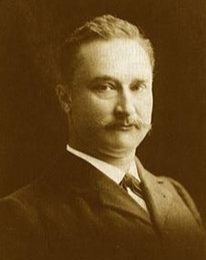Many people refused to accept that the Neandertal bones were ancient at all. August Mayer, a professor at the University of Bonn and a man of influence, insisted that the bones were merely those of a Mongolian Cossack soldier who had been wounded while fighting in Germany in 1814 and had crawled into the cave to die. Hearing of this, T. H. Huxley in England drily observed how remarkable it was that the soldier, though mortally wounded, had climbed sixty feet up a cliff, divested himself of his clothing and personal effects, sealed the cave opening, and buried himself under two feet of soil. Another anthropologist, puzzling over the Neandertal's heavy brow ridge, suggested that it was the result of long-term frowning arising from a poorly healed forearm fracture. (In their eagerness to reject the idea of earlier humans, authorities were often willing to embrace the most singular possibilities. At about the time that Dubois was setting out for Sumatra, a skeleton found in Perigueux was confidently declared to be that of an Eskimo. Quite what an ancient Eskimo was doing in southwest France was never comfortably explained. It was actually an early Cro-Magnon.)[qh]
有許多人拒絕承認尼安德特人骸骨是古人類的化石。波恩大學有影響的教授奧古斯特·梅耶認為,這些骸骨不過是一名蒙古哥薩克士兵死后留下的。他1814年在德國作戰中受了傷,最后爬到洞穴中死去。聽到這種說法,英國的T.H.赫胥黎不無嘲諷地說,那位士兵真是了不得,盡管已經受了重傷,還爬到將近20米高的懸崖,然后脫去身上的衣服,扔掉所有的私人物品,最后封上洞口,將自己埋在半米多深的土里。另一個人類學家對尼安德特人的大眉脊作了深入研究,認為這是由于前臂骨折而又沒有完全痊愈而長時間皺著眉頭的結果(在迫不及待地否定有關早期人類的觀點的同時,權威人士經常對極不可能的事倒是不假思索地加以接受。就在杜布瓦出發去蘇門答臘前后,有人在佩里格發現了一副骸骨;它被很有把握地宣布為愛斯基摩人的化石。至于一個古代的愛斯基摩人在法國西南部干什么,一直沒有一個像樣的解釋。實際上這是一個早期的克羅馬農人。)[qh]

弗朗索瓦·托馬斯·杜布瓦
It was against this background that Dubois began his search for ancient human bones. He did no digging himself, but instead used fifty convicts lent by the Dutch authorities. For a year they worked on Sumatra, then transferred to Java. And there in 1891, Dubois—or rather his team, for Dubois himself seldom visited the sites—found a section of ancient human cranium now known as the Trinil skullcap. Though only part of a skull, it showed that the owner had had distinctly nonhuman features but a much larger brain than any ape. Dubois called it Anthropithecus erectus (later changed for technical reasons to Pithecanthropus erectus) and declared it the missing link between apes and humans. It quickly became popularized as "Java Man." Today we know it as Homo erectus.[qh]
正是在這樣的背景之下,杜布瓦開始了他尋找古人類化石的工作。不過他并非親自動手挖掘,而是使用荷蘭當局借來的50名犯人。他們先是在蘇門答臘工作了一年,之后又轉戰爪哇。1891年,正是在那里,杜布瓦——應該說是他的挖掘隊,因為杜布瓦本人很少去現場——發現了一小塊古人類頭蓋骨化石,這塊化石現在被稱為特里尼爾頭蓋骨化石。盡管這只是一塊不完整的頭蓋骨化石,可是它足以顯示化石的主人并沒有明顯的人類特征,但是有著比任何類人猿大許多的大腦。杜布瓦稱他為直立(后來因技術原因改稱為直立猿人),并且宣稱這是聯結猿和人類之間的缺環。沒過多久,大家就稱他為爪哇人。今天我們稱他為直立人。[qh]











